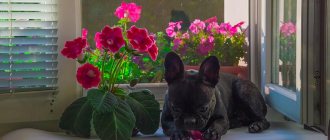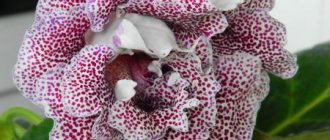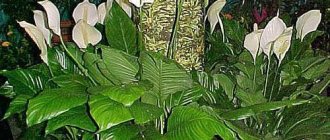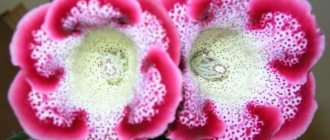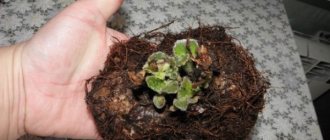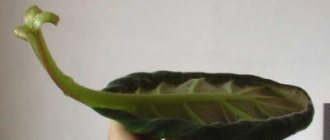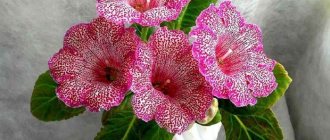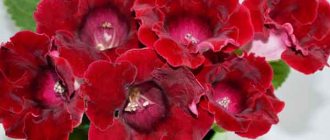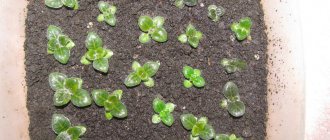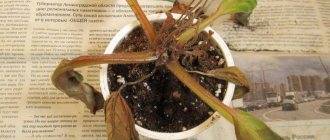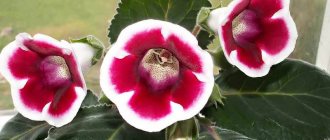Beautiful Sinningia, better known to gardeners as gloxinia, has been receiving increased attention from indoor plant lovers for several decades.
What is so attractive about gloxinias, photos and names of varieties of which are more numerous than ever? For many flower growers, their love for this culture began in childhood with large velvet bells stolen from their grandmother’s windowsill. In those days, it was almost impossible to find gloxinia other than deep purple or crimson in color. Today, breeders have obtained hundreds of plants of amazing beauty, variety of shapes and colors, ready to grow and bloom magnificently in indoor conditions.
It’s unlikely that our grandmothers suspected that studying photos and names of gloxinia varieties could take more than one hour. The collections of current fans of this flower include:
- white and pink, purple and red varieties;
- varieties with polka dot flowers;
- plants with bells, decorated along the edge with a bright contrasting border.
To simplify classification, flower growers have introduced a division of gloxinias according to the size of the bush and the characteristics of the corollas.
Classification of Gloxinia varieties
Depending on the size of the aboveground part of the plant and the rosette formed, hybrid gloxinias are divided into miniatures, which do not grow more than 20 cm, and standard plants, the diameter of the leaf rosette of which can exceed 30 cm. There are also a number of varieties that occupy an intermediate position in this classification.
The corollas of modern plants may consist of one or several rows of petals. Terry gloxinias are incredibly popular, because their bell-shaped flowers are more magnificent than simple ones, and their shape most closely resembles a camellia or a garden rose.
Based on the type of color, modern varieties of gloxinia are divided into plain, calico and tiger.
- Solid flowers are evenly colored in different tones from white, light pink or purple to purple and deep violet. Only the spot deep in the neck may be lighter or white.
- Corollas with a calico type of color are covered with uniform spots or speckles.
- Tigers are decorated not only with elegant polka dots, but also with a border around the edge of the petals.
Having seen the inscription gloxinia “Tigrina Red”, Blue or White on the package with the tuber, you can be sure that the manufacturer offers to grow a flower with an original corolla of a rich red or purple hue. However, it will not be possible to obtain the same plant from seeds, because hybrids reproduce only vegetatively.
In some varieties of gloxinia, the flowers have the shape not of the usual bell, but of a thydea, that is, a shoe, more often found in other plants belonging to the Gesneriaceae.
Gloxinias love bright, but not direct rays of the sun, are afraid of drafts and sudden temperature changes, and respond very negatively to excessive watering. It may seem that gloxinia is very capricious. But those who master plant care will not regret it. With due attention, the green pet blooms regularly from spring to autumn.
By autumn, the number of buds decreases, and then the aboveground part of the gloxinia fades. The plant begins a dormant period, during which life is preserved only in the tuber.
At home, a gloxinia plant can be obtained from a tuber planted in the spring or from seeds. You can propagate your favorite variety by rooting a healthy leaf. Thanks to this, many cultivated varieties are now more accessible than before.
Both foreign and Russian enthusiasts are engaged in the selection of gloxinia. The industrial varieties offered to amateur flower growers by large flower growing companies in Holland and other countries are widely known. Their assortment includes simple and double gloxinias, conventionally grouped according to the shape of the flowers, the size of the corollas and rosettes.
Botanical description and history of origin
Gloxinia is a perennial tuberous plant from the Gesneriaceae family. Natural habitat - central and southern deciduous forests of America, rocky banks of rivers in Mexico and Brazil.
This plant received the botanical name “Sinningia” in honor of the chief botanist of the botanical garden at the University of Bonn, Wilhelm Sinning, who sectioned this tropical beauty for many years.
Translated from German, “Glocke” means bell - hence the name gloxinia , the flowers of which are really very similar to bells. And so it turned out that the plant got two names - the botanical “sinningia” and the more common among gardeners – “gloxinia”.
Group of varieties of gloxinia Avante, Avanti
A good example is Gloxinia Avante or Avanti. This group of varieties includes many color options. Most often, gloxinias of this variety are offered in the form of seed sets for self-cultivation. Mature plants have a compact leaf rosette, against which simple velvety flowers seem even larger and more impressive.
The most common Avanti hybrids include gloxinia:
- Avanti Light Violet;
- profusely blooming white, with wavy edges Avanti White;
- with light lilac or bluish flowers, decorated with a wide white wavy border Avanti Blue with White Edge, or Blue lace;
- Scarlet, with velvety wine-red Avanti Scarlet flowers.
Wintering
As soon as the flower begins to fade, you need to start preparing it for winter : water less, do not feed with fertilizers. At the end of September - October, the roots die off; the tuber needs to be preserved: it is removed by carefully turning the pot over into a prepared basin.
The lump of earth needs to be kneaded with your hands and the tuber freed from dead roots. You can wash it, but then be sure to dry it and put it in a bag with wet river sand or sawdust. To avoid infection, it is better to ignite the sand on a baking sheet . Store until spring in a cool, dark place at a temperature not lower than +3 and not higher than +15 ° C.
Gloxinia Yesenia
One of the terry Dutch hybrids, widely cultivated all over the world, is called Yesenia. A medium or large plant up to 30 cm high forms a rosette of green leaves with short petioles, above which spectacular double flowers rise. The half-opened corollas resemble pink buds, but when a crimson or crimson flower on a short peduncle opens completely, a white or pinkish border appears along the edge of the petals. The hybrid Gloxinia Yesenia, as in the photo, is characterized by long bouquet flowering.
Home care
Although care is relatively simple, there are nuances that need to be taken into account.
So, in a year a flower goes through 3 cycles, each period has its own approach:
- Peace . Flowering stops. The plant should be removed to a cool and dark place before spring.
- Awakening. Gloxinia germinates and forms the above-ground part. Requires good lighting and watering.
- Bloom. The peak of flower life lasts from May to August. Without good lighting and watering, lush buds can not be expected.
Watering
It is better to take soft, warm water . If the water is too hard, it is boiled, cooled and softened by adding a pinch of soda for every liter. Tap water is left to sit for 8–10 hours to allow the harmful substances used to disinfect the water to settle.
Usually watered in the morning . Evening watering leads to fungal diseases, and the leaves rot. In summer they water daily, in winter no more than 2 times a month, and in spring they gradually increase the pace.
Important! You should never pour water directly onto the rosette, as this can break the flower. In addition, the leaves can get burned.
Temperature
The optimal temperature for sprouts to appear is 22…28 °C. In the cold the sprout will not come out, but in the heat it quickly stretches upward. During the budding period, the plant is cooled - 18...20 °C. Compliance with the regime guarantees the laying of the maximum number of buds . Before flowering, it is better to avoid sudden temperature changes.
The flowering period will take place if the lower mark does not drop below +20, and the upper mark – +28 °C. Rooting of cuttings occurs best at 24...28 °C - this must be taken into account in the fall, when in most cases it is cool in the apartment.
Gloxinia Hollywood
The purple flowers of Gloxinia Hollywood seem to be cut out of thin velvet. The petals of a simple flower can be darker or lighter. At the same time, the deep neck always has a light lemon tint and is decorated with contrasting purple dots. The hybrid is characterized by lush mass flowering, a small rosette of green leaves and high decorative value.
Among the mass of options, the most striking and memorable is the so-called Black Hollywood with very dark, almost black flowers without a light core.
The soil
Gloxinia needs light and loose soil, which you can make either yourself, or take soil from under a birch or linden tree, or purchase a special substrate and add the same amount of ordinary soil to it. It is also permissible to add a little perlite, sawdust or soil disintegrants.
The bottom of the pot is filled with good drainage, be it pebbles, crushed stones or small stones, and one or more holes are needed in the bottom. In this case, the water will saturate the soil well during watering and easily leave the pot through the drainage and a special hole.
Read here Bathroom renovation ideas
Gloxinia Blanche de Meru
The Gloxinia Blanche de Meru shown in the photo is easily recognizable by its large flowers with crimson petals and a white throat. The leaf rosette of the plant reaches 25 cm in diameter, and good care helps to maintain not only velvety large leaves, but also stimulates long-term, lush flowering from late spring to early autumn.
If gloxinia is exposed to direct sunlight, both velvety leaves and flowers may suffer. There are fewer of them, the opening buds are paler in color and fade faster.
How to plant gloxinia and proper care of the flower after planting
To the question of how to properly plant a gloxinia flower, the answer is this: you need to start by laying drainage at the bottom of the pot (which, by the way, must have holes). This layer is designed to provide the plant with protection from stagnation of liquid during watering and to create a barrier against the development of rot. To create a drainage system the following are suitable:
- Pebbles.
- Expanded clay.
- Clay shards.
Substrate: flower soil mixture. You can use a ready-made substrate intended for planting violets. If you want to prepare the soil mixture with your own hands, then you need to combine:
- One part of sheet soil.
- Two parts of turf soil.
- One part of river sand.
- Two parts of peat.
- One part of leaf humus.
The gloxinia tuber needs to be buried only 2/3 of its length into the substrate. Its upper part should not be covered with earth, as there is a risk of water droplets getting on the sprouts, which could result in rotting.
After planting, gloxinia flowers require certain care: the tuber must be covered with film and the pot placed in a place with plenty of sunlight. It is necessary to ventilate the mini-greenhouse twice a day – for half an hour each time.
As soon as the first two leaves appear, it can be disassembled, and then add as much soil mixture to the pot as necessary to completely cover the tuber.
Gloxinia Shagane
Gloxinia selection is carried out not only by specialists from large floriculture centers, but also by amateur enthusiasts. In recent years, such proprietary varieties from Russian and foreign breeders have gained incredible popularity.
Today there are thousands of varieties of gloxinia, photos and names of which awaken imagination, and the appearance of the flowers forces flower growers to replenish their collections again and again.
Terry gloxinia with large bell-shaped flowers, light leaves and harmonious peduncles was bred by breeder E. Slyusar. Gloxinia Shagane is a very beautiful purple tiger. The corollas with a short greenish throat are decorated with a bright violet-blue border. Most of the petals are white and strewn with purple speckles of varying sizes and intensities.
general information
Gloxinia is an indoor flower. Otherwise it is called sinningia. This is a herbaceous perennial plant. It has rhizomes in the form of tubers and is a representative of the Gesneriaceae family.
The leaves are velvety, grow in breadth, and are moderately thick. The leaves give off a pleasant, delicate scent. Gloxinia has very beautiful flowers. Each flower looks like bells or shoes. They are located on peduncles of different lengths. Flowers come in a wide range of shades. Color may vary.
For example, it can be white, pink, lilac, red, etc. Among all the variety of plants, there are simple varieties, terry ones. Along the edges of the flowers there is a border, a neat frill. The surface inside is strewn with specks of a darker or lighter color. The flowering period usually occurs in March and April.
Gloxinia is native to South America (Brazil). In European countries they became acquainted with the flower only in the 19th century.
In order for people to express their feelings, the language of flowers was invented in eastern countries. The meaning of gloxinia is love that occurs at first sight. Therefore, the plant is used as a kind of love talisman that brings peace and harmony to relationships.
The plant has an unusual ability. It helps in relieving fatigue and tension in a person who has been engaged in monotonous physical or mental work for a long time.
Its varieties are incredible in their coloring. The catalog, which presents all the options, can be seen on the website of Svyatoslav Siletsky. He collected all the specimens, even the plants that breeders came up with in 2015.
Gloxinia Cleopatra
Calico-colored gloxinias are no less spectacular than tigrines or plain flowers. Terry gloxinia Cleopatra immediately stands out from other varieties. It has large double flowers of white color, which are richly decorated with purple and lilac polka dots. The edges of the petals are corrugated, and the speckled pattern on them becomes smaller and lighter. The flower has a pinkish neck, also powdered with crimson and crimson spots and streaks. A strong plant with large leaves thanks to its short peduncles, it is very compact and, with proper care, maintains lush bouquet flowering.
Terry multicolor
Light
Gloxinia charm has delicate milky flowers with a bright pink edge. All over the petal there are pink polka dots of different sizes. Flowers are held on strong medium-sized peduncles. Belongs to a compact group.
Karina variety with huge milky-white flowers on tall peduncles. Lilac-raspberry specks begin at the base of the yellow neck. Rising to the edge of the petal, they form a border of the same color. The leaves are large, lush green. Standard group.
Gloxinia Cleopatra is deservedly popular. Who can calmly pass by a profusely blooming indoor plant with white or light pink bells that taper towards the peduncle. On the light background of the petal, peas are scattered, pink along the edge, turning into lines of burgundy and purple towards the core of the flower. Blooms all summer. Flower size and fullness increase if fertilized in moderation. The bush belongs to the compact group.
Gloxinia sudarushka is white with reddish or pink polka dots forming an unusual pattern. The edges of the tubular petals have a clear border, as if someone had worked with a pencil.
Flower growers fell in love with Gloxinia Dolce Vita for its large (up to 10 cm) flowers sitting on thick peduncles. When they bloom, it seems that a pearly pink cap has been thrown over the lush green leaves. Group – standard.
Sharon stone - stands out with large delicate milky-white flowers, along the edge there is damask of an intense pink shade. It is quite wide, as if you took a felt-tip pen and drew a line. Sharon's throat is yellowish. The leaves of the charming Gloxinia Sharon Stone are juicy green, slightly elongated. The group is standard.
The Shalunya hybrid is a compact gloxinia. The petals are white with a pink border (sometimes without it) and a beige neck. When the flower blooms, it seems that a white rose has bloomed on a long peduncle. There is only one bad thing: the “rose” does not always open to the end.
In the Gloxinia hybrid variety Shagane, the blossoming flower resembles a rose. On the white petals, along the edge there is a blue border two centimeters wide. There are purple and violet specks and peas all over the field. The peduncle is stable and low. The bush belongs to the compact group.
Gloxinia zaznoba is a compact bush with round white flowers. The narrow border is light purple, the polka dots are purple and purple. Blooming flowers are collected into a neat bouquet due to short peduncles. The neck is yellowish. The leaves are juicy green, elongated.
Gloxinia with the English name Georgia has an open flower, with crimson-colored speckles along the white field of petals. The edge is bordered by a narrow lilac stripe. The bells are large, wavy, with pronounced corrugation. If the plant is grown in favorable conditions, the peduncle turns out to be stable and thick. The bush belongs to the standard group.
Gloxinia quadrille is a standard group, distinguished by large light roses up to 10 cm in diameter with red peas. They increase in size closer to the neck. On the neck, in addition to small specks, stripes are clearly visible. Petals are corrugated. The leaves are dark green, the underside is slightly reddish. Peduncles up to 10 cm.
Gloxinia Winter Cherry
Unfortunately, the author of this magnificent variety is unknown, but this does not detract from the merits of the plant with bright double flowers of original color. Gloxinia Winter Cherry is a semi-miniature plant, so its corollas are small, but unforgettable. White bells are densely strewn with large cherry spots. The calico color of the flowers becomes somewhat lighter towards the wavy edges. The shape of gloxinia bells is very similar to fantasy roses. The variety is characterized by small green foliage with a fleecy surface.
Who is who?
The name “gloxinia” was assigned to the flower as a result of strange twists and turns. Initially, the first discovered tropical plant was described by a participant in the navigating expedition - a young doctor and botany lover Benjamin Gloksin in 1785. A flower with large green leaves and peduncles in the form of variegated bells received the name Gloxinia speckled in honor of its discoverer. A little later, botanists discovered another plant, very similar to Gloxinia speckled, which, by analogy with a similar specimen, was called Gloxinia beautiful (or beautiful). In 1825, another similar specimen settled in a botanical garden near London, but it had very serious differences - a tuberous root system and a slightly different flower shape. This species was named Sinningia in honor of the botanist Wilhelm Sinning. All modern species and varieties of these flowers are numerous hybrids from the species Sinningia beautiful.
As a result of long classification proceedings, researchers agreed that Gloxinia the beautiful is nothing more than Sinningia the beautiful. However, ironically, the later name “sinningia” failed to displace the earlier, erroneous one. And the plant, called Sinningia in science, has forever remained Gloxinia for practicing flower growers and florists. And since this sonorous name is firmly entrenched in floriculture usage, then we will call this interesting flower in exactly the same way.
